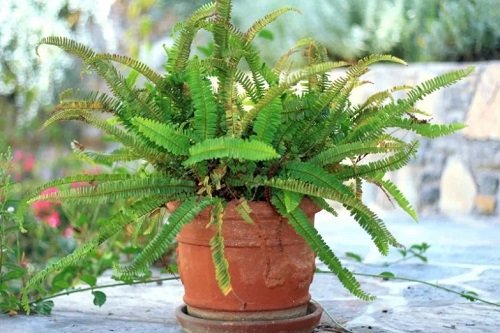If your question is, why are my ferns turning brown and Dying? You’re going to find out the answers below.
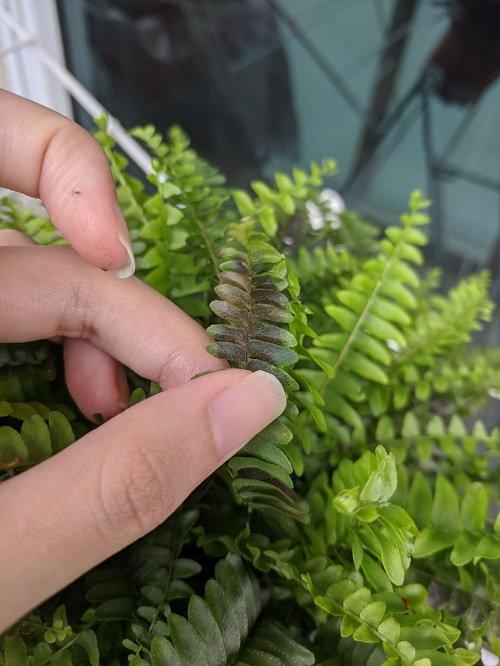
Are your Ferns Turning Brown and Dying? Well, there could be many reasons behind it, and in this article, we will discuss them all in detail, along with the solutions.
Check out the Best Ferns for Containers here
Ferns Turning Brown and Dying? Reasons and Solutions
1. Underwatering
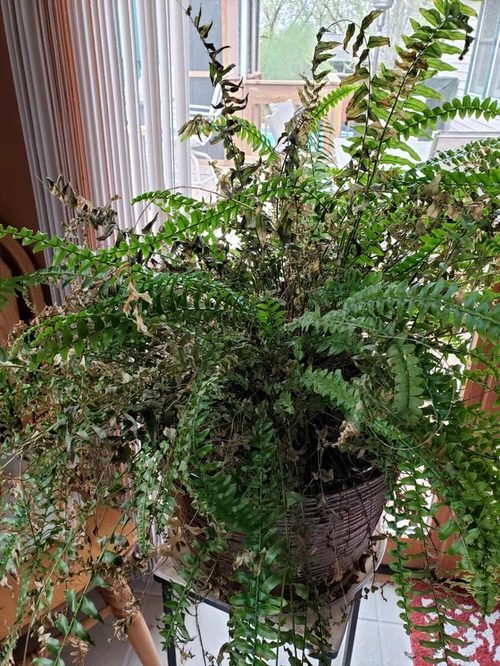
One of the reasons behind the brown fronds of ferns is underwatering. These plants like consistently moist soil. Dry periods between watering spells, dehydrating air, and windy locations can also result in brown leaves due to the absence of moisture.
You are watching: Ferns Turning Brown and Dying? Here’s How You Can Save Them!
The best way to identify this is to hold a brown frond in hand and notice wrinkled and papery leaves. Here’s what you can do:
- Water: Start by gently watering the fern until you can see water come out of the base of the pot. Make sure to use room temperature water, as cold water can shock the roots of the fern.
- Check the Soil Moisture: Keep an eye on the topsoil and check it once in 3-5 days. Water the plant when it feels a little dry to the touch.
- Move the Fern: Place the fern in a spot with bright indirect light, as too much direct sunlight can cause the leaves to scorch.
Learn about the Signs of Underwatered Plants here
2. Low Humidity

If you notice indoor ferns are turning brown and air dry, then it can be because of low humidity. Indoor ferns belong to tropical climates and are suited to live in 40 percent humidity or more, which is too low at 10% inside the home, making the foliage brown, dry, and crisp. Here’s what you can do.
- Increase Humidity: Increase the humidity around the fern by misting the leaves with water every few days. If you have a humidifier, use it to increase the humidity in the room.
- Increase Airflow: Ferns need good air circulation in order to thrive. Place a fan near the fern to increase airflow and prevent the leaves from browning due to low humidity.
- Move the Plant: Move the fern to an area of your home that is more humid. This could be a bathroom or a kitchen, for example.
- Keep the Soil Moist: Make sure the soil around the fern is evenly moist but not soggy. Overwatering can lead to root rot and further browning of the leaves.
- Add a Humidity Tray Near Plant: Place a humidity tray near the fern to increase the level of humidity in its vicinity.
- Keep the Plant on a Pebble Tray: Fill the tray with water and pebbles, making sure the pot is not sitting directly in the water. Place the tray near the fern but not too close to avoid
Learn the Ways to Boost Humidity Near Houseplants here
3. Too Much Sunlight
Ferns planted in full sun can lose water from leaves quicker than the roots can take moisture, which makes the foliage appear burnt and brown. All fern varieties are quite sensitive to direct sunlight, which makes the soil dry quickly and results in brown leaves.
Read more : Cost of an Outdoor Wedding in 2023
Full sun also reduces humidity and enhances the temperature. Here’s what you can do:
- Move the Fern to an Area with Indirect Sunlight: Ferns prefer bright, indirect, or partial light and will scorch if exposed to too much direct sunlight.
- Monitor the Soil Moisture: Ferns prefer slightly moist soil but not wet. Allow the top inch of the soil to dry out before watering, but never let your growing medium become too dry.
Find the Signs that Indicate Your Plants Need More Sunlight here
4. High Temperatures
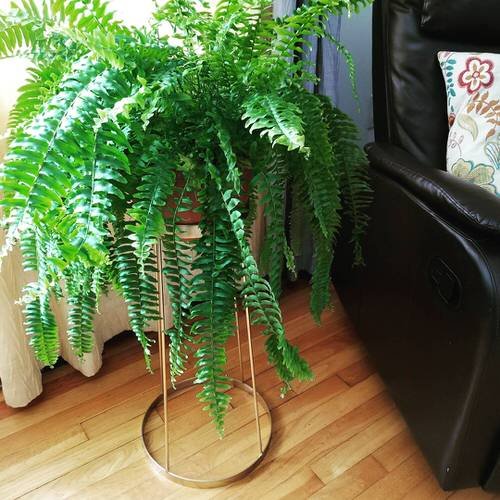
Higher temperatures can raise the rate at which fern transpires from the foliage and increases the evaporation from the soil. This can make the fronds turn brown prematurely.
Here are some of the pointers to follow to save the plant:
- Move the fern to a cooler location with more shade and indirect sunlight. Ferns prefer temperatures between 65-75°F (18-24°C).
- Increase humidity around the fern. Ferns prefer high humidity, so misting the leaves every day can help.
- Prune any browning fronds. Cut off any browning fronds at their base.
- Increase air circulation around the fern. Place a fan near the fern to help circulate air and prevent hot spots.
5. Small Containers
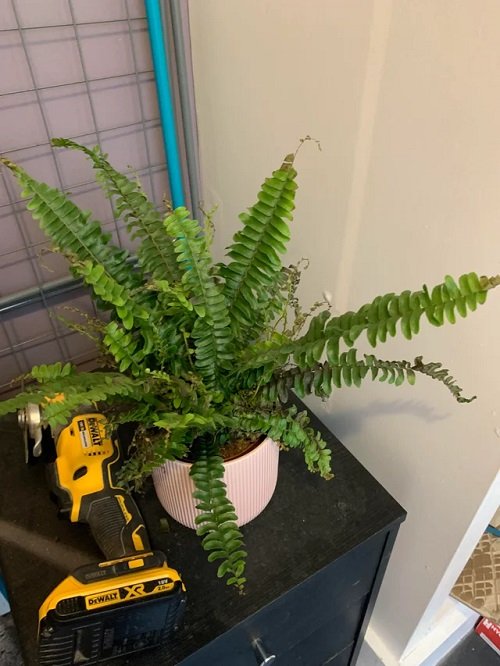
The leaves turn brown when pots are too small, and plants become root-bound. Small containers dry out fast due to fern roots pulling up moisture.
If the fern is in the pot for a long period, then the roots can deplete the soil of nutrients, and the root system grows wide and needs more water than the soil can keep.
- Remove the fern from the pot and check the roots. If they appear to be too crowded, gently loosen them with your fingers.
- Carefully trim any damaged or dead roots.
- Re-pot in a 1-2 size large container than the old one with fresh, well-draining potting soil.
- Water thoroughly and make sure it is not sitting in standing water.
- Place the fern in a bright, indirect light.
6. Outdoor Ferns Turning Brown During Fall
Read more : DIY: The right way to fit outdoor tiles
Outdoor ferns turn brown due to winter temperatures, too much sun, or dry soil. They also dislike being grown in dry sandy soil that drains fast.
- Move the fern to a sheltered location. Make sure it is in a spot that gets partial shade and is protected from the strong wind.
- During fall, keep the soil moist but not soggy.
- If the fronds are browning or yellowing, trim them back to encourage new growth.
Learn How to Keep your Ferns Lush and Beautiful here
7. Over Fertilization
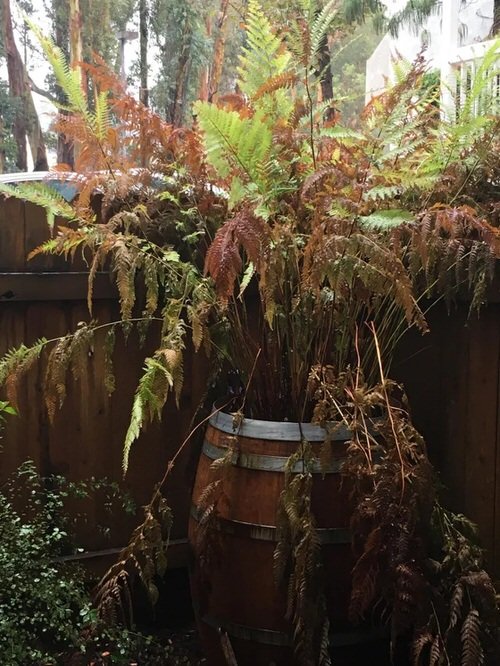
Overfertilizing ferns can cause the fronds to turn brown due to salt burn. Salt burn is caused by an accumulation of salts in the soil from fertilizer. High levels of salt can cause the fronds to dry out, turn brown, and eventually die.
- Water: Immediately after noticing the browning of the fern, water thoroughly. This will help to dilute any excess fertilizer that may be present in the soil and help to reduce the effects of over-fertilization.
- Remove excess fertilizer: Carefully remove the excess fertilizer from the soil. For best results, use a trowel or small shovel to scoop out the top inch or two of soil from the pot and discard it.
- Re-pot with fresh soil: Re-pot in a clean container with fresh soil that is not fertilized. Be sure to use a pot that is large enough to accommodate the plant.
- Reduce fertilizer: If you must fertilize, do so very sparingly and only use a balanced fertilizer at half the recommended strength.
Find the Top Over Fertilization Symptoms here
8. Root Rot
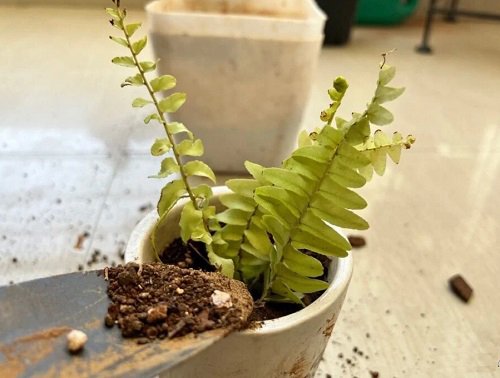
Root rot is a fungal disease that attacks the roots of ferns. It is most commonly induced by overwatering or poor drainage, a consistent wet environment that allows the fungus to grow and spread is the reason.
Symptoms of root rot include yellowing, browning, or wilting of the fronds that appear mushy and soft and brown or blackened roots.
- Remove the fern from its pot and inspect the roots. Remove any dead or damaged roots and discard them.
- Trim off any brown or damaged fronds.
- Water the fern only when the topsoil feels a little dry to the touch. Never water the plant on a daily basis unless it is root bound.
Learn How to Treat Root Rot here
9. Aging

Ferns turn brown due to aging when the fronds, or leaves, begin to die back. As they age, the fronds lose their bright green color and become brown and brittle. This is due to the cessation of new growth and the gradual death of old leaves.
As the fronds die, they fall off the plant. This is often due to environmental stress, such as too much heat or too little moisture, or diseases.
Learn about Growing Red Fern Plants here
Source: https://gardencourte.com
Categories: Outdoor


